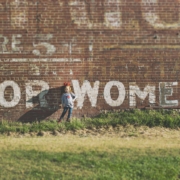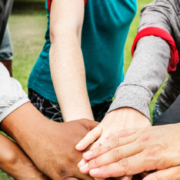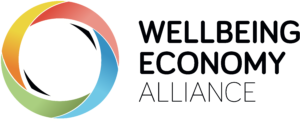 by Elisabeth Kühn, CLI Managing Partner and 36×36 project lead
by Elisabeth Kühn, CLI Managing Partner and 36×36 project lead
The Covid-19 pandemic has only been the last in a series of events that have simultaneously brought us together and isolated us as human beings across the globe. Caused by an invisible virus, it has taught us what it means to live in an interconnected world. This is more than a lesson in global health issues. It invites us to realize that understanding our world from a systemic perspective is necessary. We are connected in a multitude of ways, and just as these invisible connections can bring about destruction, they can also be leveraged for building wellbeing on a healthy planet for all humankind.
Recognizing our interconnectedness is the starting point for building the 36×36 transformation network. As part of the second expertise building module on “Strategizing Transformative Change” in the project, the womxn in the network came together for a strategic session around the big question: How can we become not just an exchange network of professional femxle change makers passionate about driving new economic approaches, but be a transformation network that drives strategic action? This is a daunting task. But while it is true that a network of 36 passionate womxn cannot change the world alone, they can be the powerful starting point. Consciously leveraging the expertise, action, strategies and connections between womxn towards a deliberate and action oriented network is the first step in bringing about the transformation towards wellbeing on a healthy planet.
This question was explored in a module that was both an expertise building and a strategic working session. The overall guidance was provided by the six Network Enablers, the design elements necessary for transformative networks that bring about aliveness in systems. They are derived from the same conceptual background (see FAQ here) that is also behind the larger six strategic questions guiding the process towards the network’s manifesto. In addition, three key success factors focused the womxn’s work in the module: a) successful, transformative network action needs to start in small collective action teams. Building thriving connections starts in small teams of network members, such as regional teams. From these teams, connections across the whole network can be built, which brings in the second success factor: b) a shared vision of the network. The creative process of defining how the 36×36 network wants to be in the future provides an anchor to collective action teams and ensures against working in silos. And finally, the big task of how to start action in the face of such complexity is done with c) first theories of change for the network, developed in said collective action teams. Theories of change, while not without its limits as a tool, provide a powerful record for an intervention logic, and support the coherent development of goals, strategies, results and activities around a common vision.
The womxn’s strategic work on a shared vision for the network as well as theories of change developed in regional collective action teams will be integrated and developed further over the following weeks – towards a solid foundation for an action-oriented network that drives and leverages connections among its members, and that prepares the way for expanding to further connections and networks beyond 36×36.











